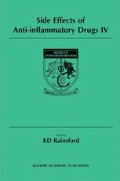Abstract
Eleven chemicals, with a known potential to damage skin as corrosives, irritants or non-irritants, have been tested for their ability to affect the function and viability of mammalian cells in three in vitro assays. The assays measured total protein content by Coomassie Blue R binding (CB), lysosomal integrity by Neutral Red uptake (NR), or mitochondrial function by MIT uptake/reduction. Two cell lines, Chinese Hamster Ovary cells (CHO) and Swiss Albino Mouse Fibroblasts (3T3), were compared.
The results of all three assays agreed well with one another and with the observed number and morphology of the cells for each chemical tested. The CB tended to be the least sensitive and the NR the most variable of the three assays. Overall the MTT assay was most reliable, but may give anomalous results if used alone. CHO and 3T3 cells gave similar results, although 3T3 cells tended to be less sensitive than CHO cells. This may depend principally on the rate of division and proportion of dividing cells.
Using the results from the MTT assay, corrosive chemicals were cytotoxic, since concentrations of less than 10 µg/ml reduced dye uptake by 50%. Chemicals which were skin irritants were moderately cytotoxic, since concentrations in the order of 50–500 µg/ml reduced dye uptake by 50%. Non-irritant chemicals were not cytotoxic up to 5 mg/ml. In decreasing order of cytotoxicity, the chemicals were ranked: tributyltin chloride, dibutyltin dichloride, silver nitrate, benzalkonium chloride, zinc monoglycerolate, sodium dodecyl sulphate, benoxaprofen, fenclofenac, n-hexane, butan-1-ol, 2-methoxyethanol. The categorization and ranking of the degree of skin irritation concurred with the degree of cell kill. These results indicate that such simple in-vitro tests could be used instead of animals to predict skin irritants at an early stage of hazard identification.
Access this chapter
Tax calculation will be finalised at checkout
Purchases are for personal use only
Preview
Unable to display preview. Download preview PDF.
References
Rainsford KD. In: Rainsford KD, Velo GP, eds. Side-effects of anti-inflammatory drugs 3. Lancaster: Kluwer Academic Publishers; 1992:287–301.
Commission of the European Communities. Collaborative study on relationship between in vivo primary irritation and in vitro experimental models. CEC/V/E/3/Lux/ 157/88 revision 1. 1990;VII:17.
INVITTOX. The FRAME modified neutral red uptake cytotoxicity test. The ERGATT/FRAME data bank of in vitro techniques in toxicology. INVITTOX protocol number 3a. ISSN: 0960–2194; 1990.
INVITTOX. MTT assay. The ERGATT/FRAME data bank of in vitro techniques in toxicology. INVITTOX protocol number 17. ISSN: 0960–2194; 1990.
INVITTOX. The FRAME cytotoxicity test (Kenacid Blue). The ERGATT/FRAME data bank of in vitro techniques in toxicology. INVITTOX protocol number 3b. ISSN: 0960–2194; 1992.
Saint-Louis R, Pelletier E, Marsot P, Fournier R. Distribution and effects of tributyltin chloride and its degradation products on the growth of the marine alga Pavlova lutheri in continuous culture. Water Res. 1994;28(12):2533–44.
Karlberg AT, Nilsson JLG et al. Structure - activity relationship as a tool in contact allergy risk assessment. Toxicol In Vitro. 1994;8:967–70.
Barratt MD, Basketter DA et al. An expert system rulebase for identifying contact allergens. Toxicol In Vitro. 1994;8:1053–60.
Lawrence JN, Benford DJ. Prostaglandin E2release in keratinocyte cultures following exposure to various tumour promoters. Toxicol In Vitro. 1995;9:205–13.
Lawrence JN, Dally JJP, Benford DJ. Measurement of eicosanoid release in keratinocyte cultures to investigate skin irritation and tumour promoting activity. Toxicol In Vitro. 1995;9:285–91.
Becker D, Kolde G, Reske K, Knop J. An in vitro test for endocytic activation of murine epidermal Langerhans cells under the influence of contact allergens. J Immunol Meth. 1994;169:195–204
Botham PA, Chamberlain M et al. A prevalidation study of in vitro skin corrosivity testing. The Report and Recommendations of ECVAM Workshop 6. ATLA. 1995;23:219–55.
Author information
Authors and Affiliations
Editor information
Editors and Affiliations
Rights and permissions
Copyright information
© 1997 Springer Science+Business Media Dordrecht
About this chapter
Cite this chapter
Clare, M.G., Cormack, H.L. (1997). Can In-Vitro Assays Predict Chemically-Induced Skin Damage?. In: Rainsford, K.D. (eds) Side Effects of Anti-Inflammatory Drugs IV. Springer, Dordrecht. https://doi.org/10.1007/978-94-011-5394-2_32
Download citation
DOI: https://doi.org/10.1007/978-94-011-5394-2_32
Publisher Name: Springer, Dordrecht
Print ISBN: 978-94-010-6269-5
Online ISBN: 978-94-011-5394-2
eBook Packages: Springer Book Archive

